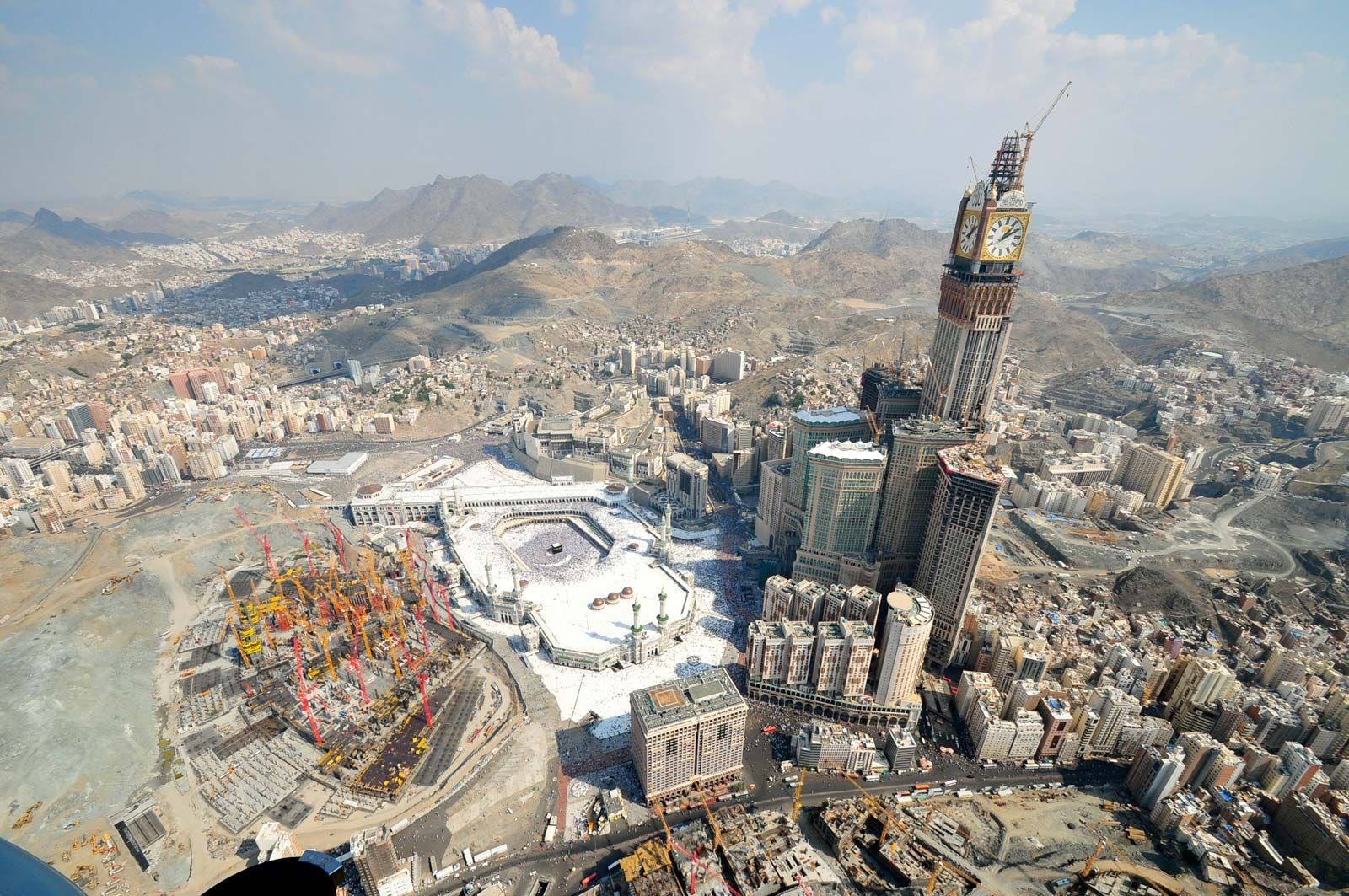Mecca, also spelled Makkah, holds unparalleled significance for Muslims worldwide. As the holiest city in Islam, it draws millions of pilgrims annually for the Hajj, a mandatory religious duty for those who are able. But what is Mecca beyond its religious importance? This article explores its geographical characteristics, climate, urban layout, and demographic composition, offering a comprehensive understanding of this unique city.
The Landscape and City Site of Mecca
Mecca is nestled in a valley within the arid Hejaz region of Saudi Arabia. Specifically, it is situated 909 feet (277 meters) above sea level amidst the dry riverbeds of Wadi Ibrahim and its tributaries. Towering over the city are the Ṣirāt Mountains, with notable peaks including Jabal Ajyad (1,332 feet), Abu Qubays (1,220 feet), and QuÊ¿ayqÊ¿Än (1,401 feet).
A particularly significant landmark is Mount Hira (2,080 feet). It houses a cave where the Prophet Muhammad sought solitude and received his first revelation of the Quran. South of Mecca, Mount Thawr (2,490 feet) contains the cave where Muhammad hid from his pursuers during the Hijrah (migration) to Medina, a pivotal event marking the start of the Islamic calendar.
Access to Mecca is facilitated by four mountain passes, each leading to different destinations: Minā, Arafat, and Al-Ṭā’if (northeast); Medina (northwest); Jeddah (west); and Yemen (south). These passes have dictated the city’s modern expansion.
Mecca’s Climate: A Study in Aridity
Mecca experiences a hot desert climate characterized by high temperatures throughout the year. Summers can be scorching, with temperatures potentially reaching 120 °F (49 °C). Despite its location, Mecca is susceptible to seasonal flash floods due to its low-lying terrain and infrequent, yet intense, rainfall. The city receives less than 5 inches (130 mm) of precipitation annually, primarily during the winter months. The aridity is a key factor shaping the environment and influencing the city’s development.
Scarce Flora and Fauna
The harsh climate limits the diversity of plant and animal life in and around Mecca. Vegetation primarily consists of drought-resistant species such as tamarisks and various types of acacia. Wildlife includes animals adapted to arid conditions, such as wild cats, wolves, hyenas, foxes, mongooses, and jerboas (kangaroo rats). These species have evolved to survive the region’s challenging environment.
The Urban Layout: Centered on the Haram Mosque
The heart of Mecca is the Haram Mosque, also known as the Great Mosque. Within its walls lies the Kaaba, the most sacred site in Islam, and the Zamzam well. The old city, a compact area surrounding the mosque, stretches north and southwest, constrained by the nearby mountains to the east and west. Key avenues include al-Muddaʿah and Sūq al-Layl (north of the mosque) and al-Sūq al-Ṣaghīr (south).
Since World War II, Mecca has expanded along the roads leading through the mountain passes to the north, northwest, and west, giving rise to modern residential areas such as Al-Ê¿AzÄ«ziyyah, Al-Fayá¹£aliyyah, Al-ẒÄhir, Al-ZahraÊ¿Ä, and ShÄriÊ¿ al-Manṣūr. The 21st century has seen the construction of numerous skyscraper hotels around the mosque, reflecting Mecca’s modern development.
The Haram Mosque itself has undergone extensive expansions, incorporating advanced communication networks, air-conditioning, escalators, and intricate pedestrian routes and tunnels. It can now accommodate one million worshippers simultaneously. The Abraj Al-Bait skyscraper complex, located south of the Haram Mosque, houses hotels, shopping centers, and prayer areas, further catering to the needs of pilgrims.
Demographics: A Cosmopolitan Hub
Mecca has a high population density, primarily concentrated in the old city. The modern residential areas have lower densities. During the Hajj, the city’s population swells with one to two million worshippers from Saudi Arabia and other Muslim countries. While only Muslims are permitted to enter Mecca, the city is remarkably cosmopolitan, drawing people from diverse national backgrounds. People of similar national origin often reside in specific areas of the city, creating a vibrant cultural mosaic.
In conclusion, Mecca is more than just a religious center; it is a city with a unique geography, climate, urban structure, and diverse population. Its significance stems from its place as the holiest city in Islam and as a destination of pilgrimage, but its character is also shaped by the environment, its history, and its inhabitants. Understanding these aspects provides a deeper appreciation for what Mecca truly is.

